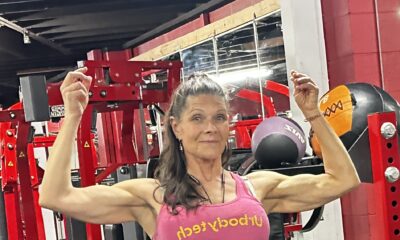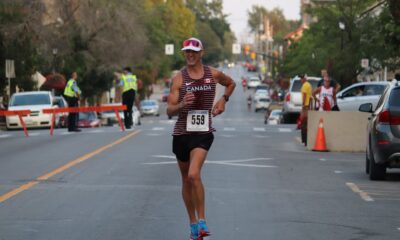With the Vancouver Sun Run fast approaching on April 22nd and the spring marathon season in full bloom, runners gearing up for the big run will be wise to add cross training and healthy eating habits to their routines if they haven’t already done so.
If you shave just a few seconds off your best times, that is a positive. Or you could break through a time barrier you never thought possible.
Logan Dube, Fitness Manager at Steve Nash Fitness Club was willing to share her expertise on the subject of cross training and in a recent email interview she offered her take on the best road to overall fitness.
A reporter asked Dube if cross training was an important element to running. Her one-word response: “Crucial!” Then she elaborated, saying, “One – to prevent injury; two – to improve performance with longer run stride, stronger legs, etc.”
Dube further explains the benefits of cross training: “Firstly, you’ve got a set distance. Then the consideration of how long it takes you to complete the race. Better stride length would mean (fewer) steps to complete the distance. Faster leg speed would mean finishing the race faster. Stronger core would mean more efficient use of the whole body and better biomechanics. Proper joint stability/mobility would reduce risk of injury or wear and tear on the body.”
would mean more efficient use of the whole body and better biomechanics. Proper joint stability/mobility would reduce risk of injury or wear and tear on the body.”
She continues, “Running is one functional movement and the more you do just one thing the more your body becomes unbalanced. Your running muscles might be strong to the point of getting too strong, (leading to) IT band issues, knee pain, hip pain, back pain.” Dube adds, “The movements you don’t train are like the weak link in a chain – any athlete that works to eliminate their weak links is a better athlete. They perform better, reduce risk of injury and can sustain the sport they love for longer! And if you’re stuck at a plateau – can’t run faster, can’t increase distance or nagging injuries – your cross-training will make you faster (with) more effective improvements in your running!”
When it comes to fueling your body, registered dietitian Sarah Kasman at Copeman Healthcare offers her advice here: “There are many ways to fuel your body and every athlete is completely different from each other, so at the end of the day, you should do what makes you feel great! Remember to always practice these principles during training, as these are your test runs for race day.”
Here are Sarah’s Top 5 Tips to fuel your body:
⦁ Eat regular balanced meals throughout the day. If you’re meals are more than five hours apart, add a snack to keep energy levels maintained. If your energy stays consistent throughout the day, you will be more likely to perform during a training session.
⦁ For most people, this means making:
⦁ 50 percent of your plate – produce, including: fruits and vegetables – these foods are your vitamin and mineral backbone.
⦁ 25 percent of your plate – high fibre starches may include: quinoa, barley, squash – these foods provide energy for your brain and muscles.
⦁ 25 percent of your plate – lean protein, including: Chicken breast, tofu, eggs, plain Greek yogurt – this is important to build and repair your muscles.
Image
NOTE: if you’re training more than one hour daily or have eight hours between workout sessions, these proportions might look different.
⦁ Make sure you’re timing the RIGHT foods before your runs to ensure you’re getting adequate energy.
The closer you get to your run, the more you want to avoid foods that are high in fat/high in fibre as these are slow to digest and can cause your stomach to be upset. Carbohydrates are your number one fuel source.
⦁ Replace essential nutrients (electrolytes and fluid) that are lost DURING your runs. Make sure (to) drink lots of fluids, and if you sweat a lot, consider an electrolyte replacement.
⦁ Make sure you’re recovering effectively after your long runs or if you’re doing two training sessions in a day.
If you have eight hours between sessions, be aggressive with the timing of your recovery snack and have 20-25g protein with carbohydrate within 30 minutes of finishing your workout and then 1-2 hours later, have a regular meal, (which) could be ¾ cup plain Greek yogurt plus a banana.
Do you have a fitness story to share? Contact Christine
Twitter Christine Runs









